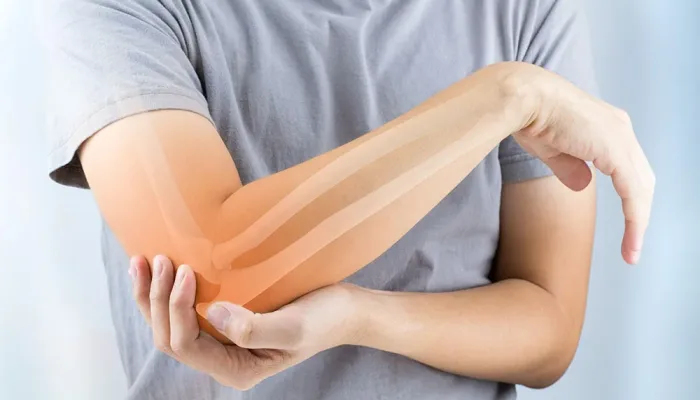- Home
- Osteoporosis
Osteoporosis
Osteoporosis
Osteoporosis causes bones to be lighter and less dense than normal. They are also more likely to break as a result of a slight bump or fall, or even if they are not injured. Porous bones are referred to as osteoporosis.
Women are four times more likely than males to develop osteoporosis, and women who have gone through menopause are at the highest risk.
Osteoporosis can cause tiny fractures in the spine, as well as bones such as the wrist or hip more easily than usual. This can result in a curved back and a reduction in height.
A combination of protein and minerals, particularly calcium, covers the inside of a bone. This mesh is made up of living tissue that is constantly regenerated through a process known as bone turnover. At the same time, old, worn-out bone is broken down and absorbed by the body, while new bone tissue is formed from fresh protein and minerals. More new bone is formed than is broken down in children and teenagers. Bones become larger and denser as a result of this.
When a person reaches peak bone mass, which usually happens in their mid-twenties, the bones are at their strongest. For the next ten years, peak bone mass is maintained, with nearly equal levels of bone formation and degradation. Bone loss begins to outnumber bone formation at the age of 35. This is a normal part of aging, but with osteoporosis, the process is accelerated, resulting in premature bone fragility.

Causes of Osteoporosis
Low oestrogen levels
The female hormone oestrogen helps to prevent osteoporosis by reducing the amount of bone that is broken down. From puberty till menopause, the ovaries produce oestrogen. Osteoporosis risk is increased by any condition that affects the number of years a woman produces oestrogen.
Risks include:
- Having menopause at a young age (before the age of 45)
- A hysterectomy at a young age (before the age of 45, especially if both ovaries are removed)
- Missing periods for six months or more because of over-exercising or over-dieting
The following factors enhance the risk of developing osteoporosis in both men and women:
- Use of corticosteroid tablets for a long time
- A family history of broken hips
- Digestive illnesses like Crohn’s disease and ulcerative colitis that impact nutrition absorption
- Immobility over a long period of time
- Heavy drinking
- Smoking
- Body weight is extremely low
Men who have low amounts of testosterone, the male hormone, are more likely to develop osteoporosis.
Symptoms of Osteoporosis
Osteoporosis is referred to as the silent disease. The majority of people who are affected are unaware that their bones are thinning until they break them or detect more subtle indicators like height loss or spine curvature (sometimes known as Dowagers Hump).
The hip, wrist, and vertebrae of the spine are the bones most likely to break as a result of osteoporosis.
Treatment of Osteoporosis
A bone mineral density test, such as DEXA, is used to diagnose osteoporosis (dual energy X-Ray absorptiometry).
A variety of effective treatments are now available to help prevent fractures and boost bone density. These include:
Hormone replacement therapy (HRT)
- This prescription-only medication seeks to restore oestrogen levels to those seen before menopause.
- HRT can treat menopausal symptoms including hot flushes, night sweats, and vaginal dryness while also lowering the risk of heart disease.
- Breast soreness and nausea are possible side effects of the medication for some women.
- HRT has also been linked to an increased risk of breast and uterine cancer. The risk, though, remains modest.
- HRT comes in a variety of forms (over 30), including pills, patches, under-the-skin implants, and gels.
Bisphosphonates
- Bisphosphonates are non-hormonal therapies that prevent bone deterioration.
- Alendronate (Fosamax), etidronate (Didronel), and risedronate(Actonel) are the three bisphosphonates available in the UK .
Selected oestrogen receptor modulators (SERMS)
- SERMS are a type of synthetic hormone replacement that works by mimicking the actions of oestrogen on the bones.
- They lower the risk of osteoporosis and heart disease while having no effect on breast or endometrial cancer.
- Raloxifene is the only SERM currently available for osteoporosis (Evista).
Supplementing with vitamin D and calcium
- Helps prevent bone loss in the elderly.
Calcitriol
- Calcitriol is an active form of vitamin D that is prescribed to postmenopausal women with spine osteoporosis.
- Calcitriol boosts calcium absorption from the stomach.
Calcitonin
- Calcitonin is a hormone produced by the thyroid gland (a hormone-producing organ located in the neck) that inhibits bone-breaking cells.
- It is only available in injection form as Calsynar (salcatonin)
Testosterone
- Testosterone is used to treat men who are low in the hormone as well as boost bone density.
- It’s offered as an injection or as an implant.
Prevention of Osteoporosis
Osteoporosis is less likely to develop people who have a high peak bone density when they are young. A healthy and balanced diet ,and regular exercise helps increase bone density, especially in persons under the age of 35. As a result, prevention must begin at an early age.
Diet
- To grow and maintain healthy bones, eat a varied, well-balanced diet.
- Your diet should be a combination of bread and cereals, fruit and vegetables, milk and dairy products, and protein (from meat, fish, eggs, pulses, nuts, and seeds).
- Calcium-rich foods are especially important for strong bones. Milk and dairy products like cheese and yoghurt are good sources.
- Vitamin D is required for adequate calcium absorption. Vitamin D is found in a variety of foods like oily fish.
Exercise
- Weight-bearing exercise aids in the formation of new bones and the maintenance of existing ones.
- Running, skipping, aerobics, tennis, weight training, and brisk walking are some good work outs to choose from.
- Ideally, you should exercise for at least 20 minutes three times per week.
- If you’re new to exercising, start slowly and increase the frequency of your workouts before increasing intensity.
- If you have a health concern that affects your heart or breathing, consult your doctor before you start.
Lifestyle Habits
- Smoking is bad for your bones, and it can also help you go through menopause sooner. If you smoke, attempt to quit.
- You should also avoid consuming excessive amounts of alcohol.

